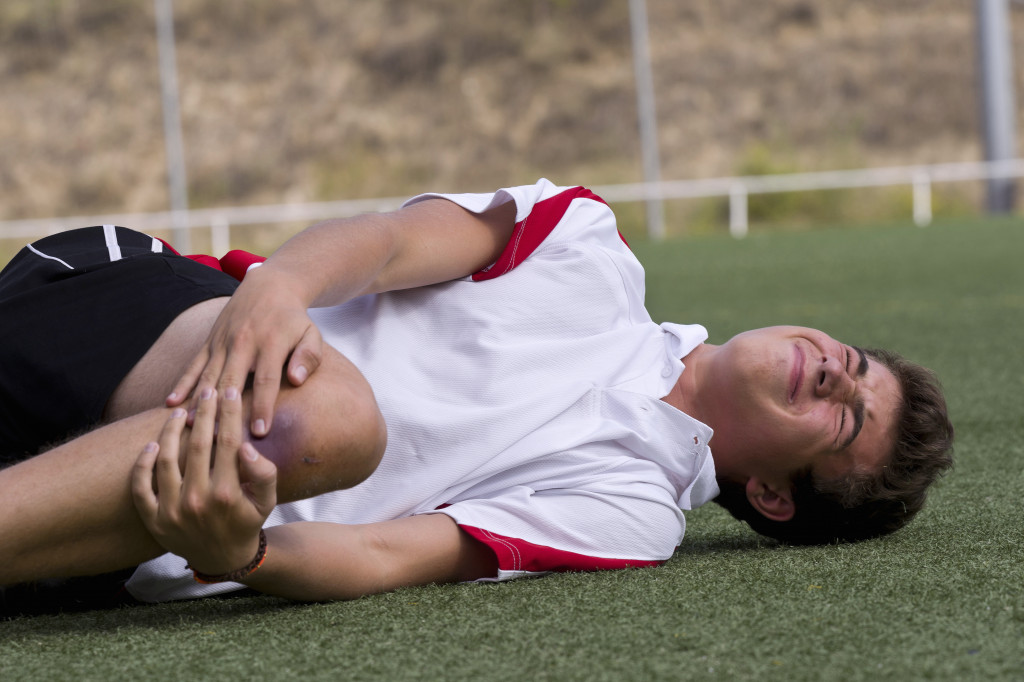Sports are essential to a child’s development, providing physical exercise, the opportunity to make friends, learn teamwork skills, and have fun. However, it is also essential to recognize that the risk of injury can accompany sports. Injuries can range from minor scrapes and bruises to more severe issues such as concussions or bone fractures. Here are some of the most common sports injuries in kids:
Sprains and Strains
Sprains and strains are among the most common injuries experienced by kids in sports. A sprain occurs when a ligament, typically one connecting two bones, is overstretched or torn. Strains occur when muscle fibers are stretched too far, overworked, or even torn entirely.
These injuries usually happen due to overexertion or trauma to the body, such as twisting an ankle wrong or being tackled hard during a football game. Fortunately, there are effective treatments for these types of injuries, such as rest, cold compresses, compression wraps, and physical therapy.
The best way to avoid sprains and strains is to stretch before engaging in any physical activity and never force the body beyond its limits. Using protective equipment while playing certain sports, like baseball and hockey helmets, while riding a bike is also essential. These steps can help keep kids active and free from sprains and strains.
Broken Teeth
Broken teeth may be one of the most common injuries in kids’ sports, but that doesn’t make it any less severe. Broken teeth usually occur when a child takes a direct blow to the face while playing a sport such as a hockey, basketball, or soccer. The force of the impact causes their teeth to break, crack, or even chip away from the gum line.
Fortunately, you can treat broken teeth with dental procedures such as fillings and root canal treatments. Consult a reputable pediatric dentist for the best advice on keeping your child’s teeth safe and healthy.
Parents should encourage their children to wear dental protection equipment such as mouthguards to reduce the likelihood of broken teeth occurring on the court or field. These simple precautions allow kids to focus more on honing their skills and having fun during practice and competition instead of worrying about potential injury.
Knee Injuries

Knee injuries are some of the most common sports injuries in children, with ACL tears and Osgood-Schlatter Disease among them. These knee injuries are usually acquired when ligaments or tendons stretch beyond their limits, often due to a sudden movement or awkward positioning.
The sharp pain experienced often indicates that medical attention is needed before further damage is done. Thankfully, there are several effective ways to treat this type of injury; physiotherapy, surgical repair, and rest can help reduce pain and restore mobility in the affected area.
Taking specific steps to avoid getting this kind of injury can also be helpful; it may involve using braces on the knee and strengthening exercises like squats and lunges as preventive measures. All in all, among sports-related knee injuries, ACL tears and Osgood-Schlatter Disease are common, but thankfully, treatment assistance is available if needed.
Shin Splints
Shin splints are a very common sports injury seen in kids. Caused by inflammation of the muscles, tendons, and bones of the lower leg, they can be characterized by pain along the shin bone, which usually occurs after exercise. Kids usually acquire shin splints when they start physical activity without establishing the muscle strength to support it.
This is especially true for sports that require repetitive use of their legs, such as soccer, basketball, running, and tennis. To avoid shin splints, children should start any new physical activity slowly and gradually build up their training routine as their body gets used to the action.
Treatment for shin splints includes rest, reducing physical activity levels, stretching daily, and using ice packs for 15 minutes to reduce inflammation. Doctors may sometimes recommend additional physiotherapy treatments if symptoms persist despite following these steps.
Groin Pulls
Groin pulls are one of the most common injuries in kids playing sports. A groin pull is acquired when muscles in the inner thigh area are overexerted or stretched too far, usually during a quick bursting movement like running or changing direction. This type of injury can be quite painful and may require rest and physical therapy to restore the full range of motion in the inner leg muscles.
Although there is no way to guarantee the prevention of all groin injuries, references suggest that stretching regularly to strengthen thigh adductor muscles and warming up and cooling down properly before and after strenuous activities can help decrease the risk. Proper training in mechanics like running form and aiming for minor adjustments when making turns or shifts in direction can also reduce the chances of a groin pull.
Concussion
A concussion is one of the most common sports injuries among kids. It occurs when an individual receives a blow to the head, disrupting normal brain functioning. Symptoms can range from mild to severe but commonly include confusion, dizziness, difficulty concentrating, headaches, nausea, and vomiting.
To avoid or reduce the chances of sustaining a concussion, it is essential for young athletes to wear protective headgear during any physical activity such as martial arts or football, pay attention to the sport’s rules and follow them strictly, refrain from playing if feeling dizzy or disoriented and receive regular checkups and medical clearance before returning to any form of exercise.
Treatment for a concussion includes monitoring symptoms carefully, ensuring that rest periods are given as directed by a health professional, and avoiding rigorous activities until advised otherwise. Properly treating and preventing concussions can help ensure that sports participation remains a fun experience without any long-term consequences.
Sporting injuries among children are unfortunately not uncommon, ranging from superficial grazes to significant trauma such as head traumas or bone fractures. By taking precautions, you will be able to keep your child safe while also encouraging them to have fun on the field or court!

